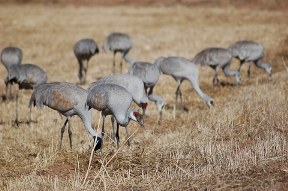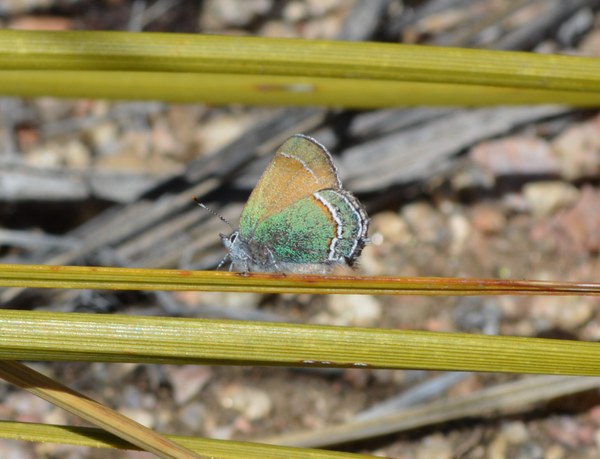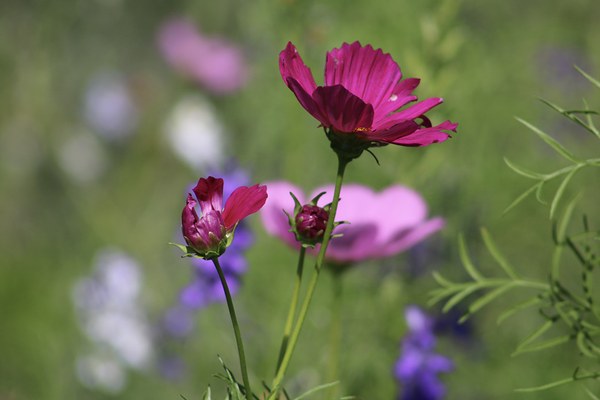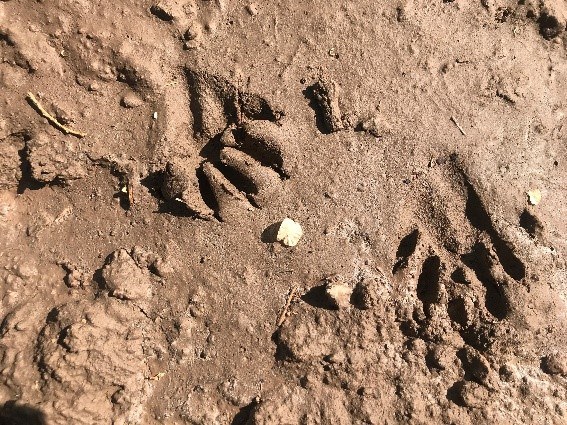Become a Citizen Scientist
Great Backyard Bird Count

Grab your binoculars and head to the Botanic Garden for the nationwide Great Backyard Bird Count, which takes place annually in February.
The event takes an annual snapshot of migratory birds, and all information collected will be given to the Cornell Lab of Ornithology to be compiled with data from around the country. Scientists use this information along with observations from other citizen-science projects to get the "big picture" about what is happening to bird populations.
New Mexico Butterfly Monitoring Network

The standardized, long-term abundance and diversity data collected by volunteers is available to anyone who asks for it and can utilized by researchers, land managers and conservationists to evaluate trends in butterfly populations across the state.
Volunteers conduct “Pollard Transects,” which entail walking a set route and recording the butterfly species seen in different habitat types along the way. Each survey takes about an hour. Each volunteer conducts 10-12 surveys at their convenience throughout the butterfly season.
Training Dates: A two-hour training session on butterfly identification and the protocol is offered every year in February.
Time of Year field work is needed: April 1-September 31
Learn more about the New Mexico Butterfly Monitoring Network.
Western Firefly Project

By expanding the project to New Mexico, we aim to map occurrences of rare flashing fireflies in the state and figure out what species we have here. Community scientist volunteers drive this effort by reporting sightings of flashing fireflies, that researchers then verify and study.
Participation is opportunistic with no commitment necessary for volunteers. No training necessary: community scientists simply submit sightings of flashing fireflies to the Western Firefly Project website.
Time of Year field work is needed: Firefly season in New Mexico is mid-May through July.
Learn more about the Western Firefly Project.
Nature’s Notebook

Nature’s Notebook data is used by the USA National Phenology Network to predict the timing of seasonal events to ensure the well-being of humans, ecosystems and natural resources. Data is openly available to the public at usanpn.org. Nature’s Notebook volunteers track seasonal events on certain plants at the ABQ BioPark Botanic Garden. They look for presence and percent cover of flowers, leaves and fruit. Learn more about Nature's Notebook.
Time commitment for volunteering: One morning per month
Training dates: On-the-job training is held as needed
Time of year fieldwork is needed: Year round
iNaturalist

The database is available to all from the novice naturalists interested in what flora is in their neighborhood to scientists at organizations such as the Global Biodiversity Information Facility who can use it as a global repository of flora and faunal observations.
Observations of living things are recorded using a phone app or website. These can be photographs or audio recordings. iNaturalist will attempt to classify the observation, or observers can post an ID. Users also verify identifications by other observers. Observations with verified identification are available for use in research.
Time commitment for volunteering: Year round, anytime
Training dates: No formal training required. Recordings of previous online recordings are available. Visit the iNaturalist website for more information.
Time of year fieldwork is needed: Year round
Caterpillars Count!

Data can be accessed by the public at on the Caterpillars Count! website and will also be used by the research team at Pheno Mismatch. Scientists will compare the timing of bird migrations to the availability of caterpillars each year.
Volunteers will monitor arthropod populations on trees and shrubs at dedicated survey sites. They’ll count and identify caterpillars and other creatures living on sample branches.
Time commitment for volunteering: Two to four hours per month
Training dates: On-the-job training is held as needed.
Time of year fieldwork is needed: Spring, summer and fall
ABQ Tree Hunt – tree growth monitoring

Data will be used to examine growth rates over time, as well as variation between species and location. Volunteers will locate target trees – they can access a list of tree locations or find trees in a public area. Instructions on a tree tag will guide them in uploading the tree’s diameter and a photo of the measuring band to the database using EpiCollect 5 on smartphones. A website with more information will be available when project development is complete.
Time commitment for volunteering: Volunteering is ad hoc and as desired.
Training dates: No training needed
Time of year fieldwork is needed: Year round
